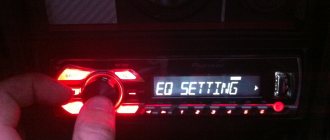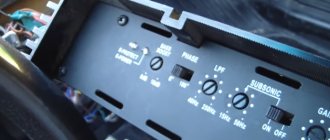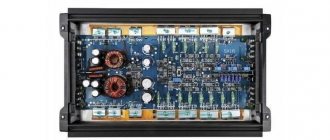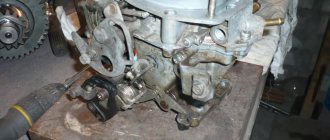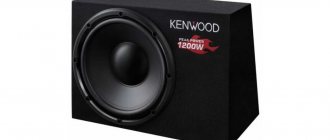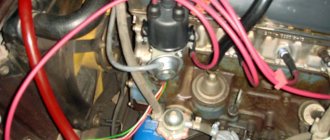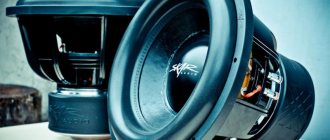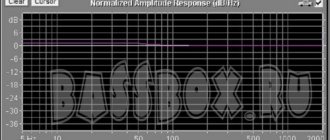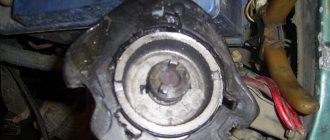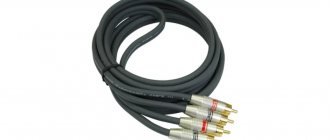A subwoofer is a good addition to a car's sound system. But it’s worth considering that buying an expensive subwoofer does not guarantee high-quality sound, since this device needs to be properly configured. To connect and configure a subwoofer properly, you must not only have good hearing, but also a deep knowledge of car audio theory.
Of course, before setting up a subwoofer in a car, it is best to seek help from specialists, and for those car enthusiasts who want to do it themselves, this article will be useful.
What should be the correct setting for a subwoofer in a car?
Setting up the subwoofer should be done at the stage of designing the speaker box. During this, many different parameters are taken into account: the music that the owner will listen to most often, the amplifier that will work with the speaker and the car in which the subwoofer housing will be installed.
When designing a box, an important role is played by the parameters of the speaker, which determine in what acoustic design it can work. For example, if a speaker is capable of playing well in a bass reflex enclosure, its port can be adjusted either higher or lower, depending on the music you prefer.
Of course, if you get a subwoofer in a factory case, its customization options are limited. But with the right approach, achieving acceptable sound is quite possible. Where to start setting up a subwoofer?
Why do you need to set up a subwoofer?
First of all, tuning the acoustics is necessary to enhance the required frequencies and increase the “drive” of the music. Theoretically, this process can be avoided by using factory presets (i.e. settings). However, not everyone is satisfied with their quality. Firstly, the factory does not take into account the features of your car's interior. Secondly, equipment manufacturers are completely unaware of your musical preferences.
Many car owners believe that having a large and powerful subwoofer guarantees excellent music sound quality.
Setting up the LPF (low pass filter) filter
Naturally, the speaker must be correctly connected to the amplifier. First, you need to turn on a filter on the subwoofer amplifier or head unit, which is usually designated as LPF (low pass filter). That is, this filter allows low frequencies to reach the speaker while cutting off high frequencies. For example, a popular cutoff frequency for subwoofers is 50 to 63 Hz.
The first stage of tuning is to set the filter to approximately this frequency. Then this value will need to be slightly adjusted. Moreover, if it is possible to use LPF on the head unit, you should enable it there. Otherwise, you can adjust the cut using the “twist” on the amplifier. There is no need to turn on the filter on the GU and the amplifier at the same time.
How do you know if you have configured your subwoofer correctly?
If the subwoofer is connected correctly, then people in the car simply cannot hear it, since it should not interfere with the main signal. If you listen to music at low volumes, it may seem that there are not enough bass frequencies. The absence of bass at low volumes is a sure sign that the subwoofer was connected correctly. Of course, there should be no noise, distortion or delay in the audio signal, and it makes no difference what type of design is used. The percentage of bass in each track must be different, that is, the playback must completely match the original track recorded by the producer.
The next article we recommend reading is called “How does a subwoofer box affect the sound?”
Setting up "Sabsonic"
Afterwards you need to use a filter called “sabsonic”. In essence, this is a high-pass filter operating in the sub-bass region. Simply put, it cuts off infra-low frequencies from the signal and passes everything higher. Subsonic is not available on all amplifiers. But if your speaker operates in the acoustic design of FI or HF, then you need to choose an amplifier that has such a filter.
Why does he need a “sabsonic”? The fact is that the subwoofer speaker will also try to reproduce frequencies that lie outside the audible range, for example 20-25 Hz and below. At such frequencies, the diffuser stroke increases, which can lead to the coil leaving the gap and damaging it. Sabsonic cuts off all the “infra” and does not allow the speaker to exceed the stroke. In addition, the quality of reproduction of the desired bass range only improves, and the volume increases.
The “Sabsonic” should be tuned approximately 5 Hz below the tuning frequency of the bass reflex port. For example, if its tuning frequency is 35 Hz, then the subsonic should be tuned to 30 Hz. To do this, you need to turn on the switch and rotate the “twist” to the required numbers.
Music for setup and testing
Regardless of what style of music will most often be listened to through the car's audio system, the subwoofer must be configured optimally for all areas that are characterized by a low frequency spectrum. It is divided into two types of low frequencies:
- useful lows - add richness;
- Parasitic lows are not perceptible to the human ear, but are felt on a physical level in the form of mild discomfort.
The setting involves precisely getting rid of or reducing parasitic lows, the frequency of which is from 30 to 40 Hz. They are mainly used in electronic music compositions and are a characteristic feature that should not be removed. Therefore, it is not advisable to use electronic music for tuning. The optimal material for testing would be to use compositions with classical instruments. This will allow you to compare the sound of familiar instruments and determine spurious sound frequencies, since bass lower than 30 Hz is rarely found in classical music.
There are also special programs for tuning speaker systems, tone generators that help configure a car subwoofer as accurately as possible by playing sound in a user-specified frequency range.
What you need to know about filters
Another thing to remember about filters is that none of them cut the signal sharply, like a knife. That is, it does not happen that the LPF is set to 63 Hz, and there is no sound at 64 Hz. All frequencies higher will be attenuated, with a smooth decline. And the smoothness of this decline will depend on the so-called filter order.
A 4th order filter will give a flatter rolloff, while a 1st order filter will give a steeper rolloff. Some head units allow you to select the filter order. This is important for setting the “junction” of the subwoofer and midbass operating areas.
Preparing equipment for adjustment
First, you need to pay attention to the process of installing equipment in a car. A suitable location is selected depending on whether the subwoofer is used - active or passive.
How to adjust an active subbuffer
The active version of the acoustics consists of two housings. One contains the amplifier, the other contains the main device. Installing such equipment is relatively simple. The main component is most often placed under the driver's seat, since this place is located close to the battery - you don't have to bother with wires. However, this will somewhat muffle the sound of the bass, and not everyone likes the vibration that occurs at some points.
An active subwoofer is easy to install, but requires careful configuration
You can also place the component in the back seat or on a special shelf. This will make it possible to better distribute sound throughout the cabin, but you will need to use several wires. Take two wires: narrow and wide. Connect them to the terminals of the acoustic equipment. The wide wire must be attached to the “+” terminal on the battery, and the narrow wire to the radio.
Most models of active equipment are equipped with a relatively weak bass amplifier. You can achieve normal sound only when listening at low volume. Its increase leads to the appearance of wheezing and other distortions. To avoid this, pay special attention to the settings.
How to set up passive acoustics
Passive subwoofers do not have a built-in amplifier, but it can be connected separately. Just make sure that the power of the main component is less than the power of the amplifier, otherwise it will overheat!
A passive subwoofer is popular with most audiophile drivers
Adjusting the subwoofer input sensitivity “GAIN” or “LEVEL”
Another important step in setting up a subwoofer is adjusting the subwoofer's input sensitivity level. It is located on the subwoofer amplifier and is designated by the word “GAIN” or “LEVEL”.
It looks like a “twist” with numbers, for example, from 0.3 to 5 V. This is not a volume level, as some people mistakenly think, although when set to maximum values, the volume does increase. This function is needed to match the level of the head unit and amplifier.
“GAIN” is adjusted using different methods. But their essence is something like this: a music signal in the form of sines with a certain frequency is supplied to the subwoofer. The level of input sensitivity is minimal.
Gradually increase the volume on the head unit until audible distortion appears. After this, the volume knob is turned back so that the sound becomes clear again. Then the “GAIN” is adjusted in the same way, turning the “knob” until signal distortion appears. Then they return it a little back. Setting up the subwoofer in the car will be more accurate if you use an oscilloscope in the process.
Bassboost
Bassboost - increases the volume at a certain frequency, usually 40-45 Hz. When using a bass boost, the chance of burning the subwoofer increases sharply, since clipping occurs much earlier. In most cases, bassboost is not needed and if you are a beginner, then just accept the rule “Don’t touch bassboost!”
Experienced people can use it to increase the frequency response shelf in order to draw out dips in certain frequencies, but these are already deep settings and the effect does not always justify the risk.
Adjusting the subwoofer's acoustic phase
Setting the acoustic phase of the subwoofer is also important. Without going into the nuances of terminology, it should be said that correct phasing allows you to ensure the sound of the “sub” in the front, along with the front speakers. If the subwoofer can be heard from behind, from the trunk, then something was done wrong.
Many amplifiers have a phase shifter “twist” that allows you to smoothly rotate the phase. Therefore, it is advisable to purchase just such amplifiers. If this is not possible, you can rotate the phase on the PG, if it has such a function. Or you can simply swap the positive and negative wires on the speaker.
Why is it important to pair subwoofers and midbass correctly?
If the subwoofer is poorly connected to the midbass, the sound will be of poor quality and incomplete. This is especially noticeable at low frequencies, when instead of pure bass you get some kind of nonsense. Sometimes such disastrous scenarios are possible, when the sound from the subwoofer will play independently. In fact, this applies to all types of music, and not just, say, classical or rock music, where “live” musical instruments are played.
For example, in tracks that belong to the EDM genre, which is so popular among young people, the brightest bass is located precisely at the junction with midbass. If they are connected incorrectly, then the low-frequency loud bass will, at best, be less impressive, and at worst, it will be barely audible. Since the amplifier must be tuned to the same frequency, it is recommended to use an audio spectrum analyzer to obtain the most accurate data.
Setting delays
The next step in setting up a subwoofer in a car is setting the delays. But this is only possible on a processor head unit or with an external processor. Some acoustic designs, such as FI, do not always have good impulse response, so the bass may be a little late. This is not always pleasant to hear.
For example, the front speakers played a note, and a split second later the sub played. To prevent this, the delays are adjusted, which allows the front speakers and subwoofer to play simultaneously.
How to avoid common mistakes
Many car owners believe that if the diffuser is actively moving and almost “jumps” out of the speaker, then this indicates that the bass is correctly adjusted. In fact, everything is completely different. This means that you are having problems setting up the low pass filter. If you adjust it, the sound will become much clearer and more elastic, and the buzz will disappear.
Another mistake is the location of the oval speakers and subwoofer at the rear of the car. It is important not to overdo it in this matter. Oval speakers themselves produce rather low sounds, so if you place them next to a subwoofer, you will greatly lose the richness of the bass.
Do not configure the subwoofer in such a way that listening to music in the car will be harmful to your health.
It is difficult to give universal instructions for adjusting a car's sound system - everything depends too much on personal preferences. However, by following the above rules, you will achieve good sound and only then you will be able to adjust the acoustics with your own hands to individual requirements.
How to install and connect a subwoofer to a car?
Guide to action: how to adjust speeds on a bike with front and rear derailleurs
Selecting a subwoofer section
I think there is no point in dwelling in detail on the choice of a specific subwoofer concept; for a person familiar with home appliances, many things are obvious. But in some ways, automotive specifics still differ from home ones.
For home appliances, the volume of the housing, although it plays a certain role, is not as significant as in a car. Here it is desirable to fit the entire structure into as small a volume as possible. This task is very controversial, and its solution is a complete compromise. As soon as you squeeze the speaker into a tight volume, the lower limit frequency immediately increases and the subwoofer simply turns into a woofer. To restore the status quo, manufacturers have to make the moving system heavier, which entails a decrease in sensitivity and therefore requires a more powerful amplifier. Therefore, you should not be surprised at car bass monoblocks with a power of hundreds of watts - they usually have to pull quite tight drivers.
So, when choosing a speaker, you have to set priorities - either give preference to “lightweights” with soft suspensions and low moving weight, with a good impulse response and not exorbitant amplifier requirements, but which will require large cases, or “heavyweights” that fit in compact housings, but require high-power amplifiers.
A subwoofer does not have to be large and take up half of the trunk. It can also be a small, neat design that does not eat up useful space in the trunk
Now a little about the sizes of the speakers. The fact that large loudspeakers, all other things being equal, require large enclosures, I think, is already obvious. But there is also another factor. The size of the subwoofer also directly determines how well it can be combined with speaker systems. For example, if the bass potential of the latter is completely bad, then choosing some heavy 15-inch sub is at least stupid - it is unlikely to work normally above 50-60 Hz. But, for example, “tens”, all other things being equal, can easily reach the acoustics from below and dock well with it.
Perhaps these are the two main points that you should pay attention to when building a low-frequency link for a car audio system. Everything else is a matter of specific speaker implementations. There can be both lightweight, large-sized subwoofers and small “slow-moving” subwoofers. Each of them, naturally, requires its own approach to choosing acoustic design. But this is a separate topic and there is no need to go deeper into it now.
By the way, as for the design, I think it is necessary to mention the subwoofer speakers for free-air installation. They usually stand a little apart. These do not require separate housings. Or rather, the housing for them will be the volume of the trunk - they are placed in the rear parcel shelf or partition between the trunk and the passenger compartment. Despite their apparent simplicity, it is quite difficult to provide them with proper design, if only because the seats for the speakers have to be radically strengthened to stone hardness, and this is due to the high labor intensity of such work. Throwing the body into the trunk is much easier, so there are very few “free air” subs on the market. Although, in my opinion, these are still one of the best subwoofers, which provide the most accurate sound in the low-frequency range.
Installation nuances in cars of different brands
The subwoofer and amplifier are placed in the luggage compartment in 99% of cases. But the trunk does not always have sufficient volume. For example, in a VAZ 2114 it is problematic to place a passive subwoofer and amplifier and leave room for transporting something. Therefore, for 2114 it is better to choose an active subwoofer with a suitable housing. Fortunately, car audio stores offer a wide selection of models of different power and configurations.
Take the installation of the power cable seriously. Look for a way to route the power wire through the factory holes. Use rubber or plastic couplings to move from the engine compartment to the luggage compartment. The wire should not come into contact with metal. This will help protect it from chafing and possible short circuits.
For the power cable, it is recommended to use plastic or rubber couplings for transition from the engine compartment to the passenger compartment and from the passenger compartment to the luggage compartment
Self-installation and connection of the subwoofer will take from 1.5 to 3 hours. The procedure is simple, but requires care and precision. If you have doubts about your abilities, contact specialists installing speaker systems. They will select the speaker components and connect them. And after 2-3 hours you will be able to enjoy high-quality surround sound in your car.
Let's get acquainted, my name is Dmitry Kuznetsov. (8 votes, average: 4.5 out of 5)
Connecting the sub: important points and instructions
Let's look at the process of installing a subwoofer in a car with a connection to the standard radio. Before starting work, pay attention to a few points:
- The subwoofer housing and the amplifier itself are large devices. We need to think about where to place them. Most often, a place is allocated for them in the luggage compartment of a car.
If possible, the amplifier is placed on the back of the rear sofa. Remember that the amplifier and active subwoofer become hot during operation. These devices require good cooling. Position the amplifier and sub so that air can circulate freely around the devices.
- If the standard head unit does not have outputs for connecting a subwoofer and there is no control wire, then think about replacing the radio. This will protect you from possible short circuits, simplify connecting the subwoofer and allow you to get high-quality sound. An active woofer requires battery power. The power cable must be of appropriate length and cross-section. Consider where to route it from the engine compartment to the luggage compartment. It must be firmly fixed with plastic clamps.
- Check the presence of a line output for the subwoofer on the standard radio. If not, there is a way out. The subwoofer is connected to speakers or AUX output. This solution is not ideal and affects the quality of sound reproduction.
- To control the active subwoofer, a System Remote Control wire is required. Without it, the amplifier module does not work. If the radio does not have such an output, then you can directly supply constant +12 volts to the input of the active subwoofer. With this connection, the amplifier operates continuously and discharges the battery.
How to properly adjust settings
It is important to take into account the driver's personal preferences. In general, the settings depend on what kind of music you listen to.
- Fans of rap, hip-hop and dubstep often enjoy "deep" bass that makes the whole body vibrate. To get it, you need to set the sound to a level of about 30–50 Hz. By the way, these genres are perhaps the only ones where such low sounds are used at all.
- If you prefer instrumental music, the minimum frequency level will be 40 Hz. Below is simply not necessary. Moreover, if you tune the bass too low, the double bass and bass guitar will lose overtones, which means the sound will become “artificial”, as if “electronic”.
- Fans of “club” music (“house”, “trance”) also do not require too low frequencies. Drum machines require a range of 40 to 100 Hz to reproduce.
Step-by-step instructions for installing an active subwoofer
- Turn off the power to the car and remove the terminals from the battery.
- Route the power cable from the battery to the subwoofer installation location. The wire should not get under the pedals or interfere with the operation of other mechanisms .
- Install a fuse on the wire near the battery. Do not connect the power cable to the battery terminal.
The subwoofer is powered by a rechargeable battery. Be sure to use a fuse to avoid wiring troubles - Remove the original radio and inspect the rear panel. Locate the line output for the subwoofer and the control wire.
Find the linear output for the subwoofer and the control wire - Route the speaker cables and REM (System Remote Control) wire from the radio to the subwoofer location. Place the wires under the trim elements and secure them securely with plastic clamps.
All wiring is laid under the trim elements of the car interior. It is securely fastened with plastic clamps - Connect the control wire, speaker cable, power and ground wires to the subwoofer. Take the “earth” from the metal surface of the car body.
- Connect the sub and REM wire to the radio. Carefully insulate the twisted areas. Install the radio in its original location.
- Connect the power cable to the “+” terminal of the battery.
Expert recommendations
Before proceeding with the settings, it is recommended to listen to several familiar songs and launch a test disc. Only after making sure that the music does not sound right can you arm yourself with a screwdriver and begin active adjustments.
When adjusting the sound, don't rush. Experiment with the settings to achieve the music sound you enjoy. A properly configured subwoofer amplifier will allow you to enjoy powerful sound.
Required tools and materials
To successfully connect a subwoofer with your own hands, prepare the following tools and materials:
- wire cutters;
- knife;
- set of open-end wrenches;
- insulating tape;
- pliers;
- plastic ties;
- power cable;
- speaker cables;
- 60A fuse in the housing;
- plastic pullers for dismantling trim elements.
The length of the wire for powering the subwoofer and speaker cable depends on the specific car model and the possibility of laying the wiring under the trim. The cross-section of the power cable depends on the power of the active subwoofer or amplifier. For example, the power of a subwoofer is 200 watts, divided by 12 (the voltage in the electrical circuit of the car), we get 16.7 amperes. The power cable must withstand this current and not overheat. Based on this, the wire cross-section is selected.
This is interesting: Car skidding when overtaking
